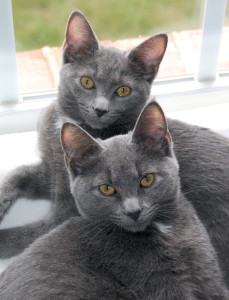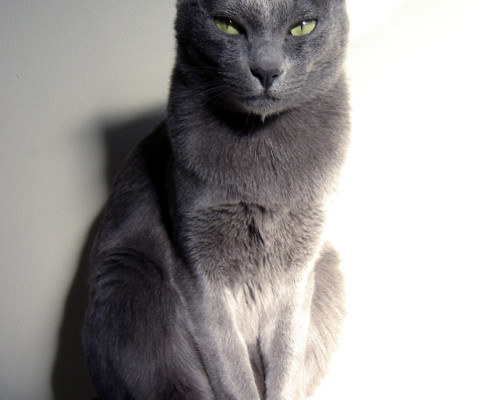Korat Cat

Meoww!!
Like most Oriental cats, the Korat is active and playful. Korats are also very affectionate and sometimes vocal. This highly intelligent breed gets along with older children and well-behaved dogs.
In 5 Words
- Blue
- Serious
- Intelligent
- Energetic
- Affectionate
Snapshot
Size: Medium
Weight: 5.5 – 11 pounds
Origin: Thailand
Lifespan: 15 years or more

Characteristics
Learn About the Korat Cat
The first documented Korats in the West were sent from a registered breeder in Bangkok to a breeder in the USA in 1959. A pure Korat breeding programme was established in the USA, and in 1972, registered Korats were imported to the UK, both countries introducing a policy of no out-crossing in order to preserve the pureness of the imported cats.
Within 2 years, there were over 20 pure Korats in this country and in 1975 the breed was given preliminary recognition. However, as they were slow to gain popularity it was another 10 years before they gained Championship status at UK shows, and they are still considered to be a minority breed. the Korat captured the attention of American soldiers serving in Thailand.
The first Korats – Nara and Darra – were brought from Thailand to the United States in 1959, by an American cat fancier. Those cats were bred together, and their kittens became part of the foundation of American Korat lines. Not long later, in 1965, Korat fanciers in the United States established a purebred cat association for the breed.
Korats were accepted into the British purebred cat registry in 1975, but they did not receive full championship status in Great Britain until 1983. The breed is still relatively uncommon, but it is steadily gaining in popularity among cat lovers world-wide.
The Korats are charmingly looking blue-grey cats with large green (yellow-green) eyes. They are medium size, well-muscled cats of semi-cobby body type, but their weight is surprisingly heavy. Males weigh 8 to 10 pounds; females weigh 6 to 8 pounds. Korats have a broad chest with widely spaced front legs. The back legs are slightly longer. The tail is heavy at the base and tapers to a rounded tip; it is medium length.
The head has a characteristic heart shape when viewed from the front and is widest across the eyes. The forehead is large and flat and the nose is short with a slight downward curve. In profile there is a stop between forehead and nose. The chin and jaw are strong and well defined. The ears are large and taper from a wide base to a rounded tip. They are set high on the head giving an alert expression.
The Korat cats are very affectionate and loving; they are quite intelligent, and will surely use this advantage to wrap you around their soft blue paws, lively, active, very agile and playful but does not like agitation or noise. He needs a tranquil environment. Korats are not very friendly toward other cats and are reserved toward strangers.
Gentle, very affectionate, and hypersensitive, they are highly attached to their owner. They need lots of love and attention. They have a melodious voice. True cat lovers say that Korats have an extremely expressive face, and a single glance is enough to understand what they need. Since Korats are very inquisitive, they must be kept as indoor cats. KORAT cats show an extremely close relationship to their owners and respond warmly to caress.
Overall, Korats are healthy cats. However, there can be two inherited diseases: gangliosidosis GM1 and GM2. They are both lethal. To get either of the diseases, a Korat cat must inherit the faulty genes from both its parents. Fortunately, specially developed genetic tests greatly helped to eliminate the problem.
The Korat’s short single coat requires little grooming. Comb it weekly to remove any dead hairs. A bath is rarely necessary.
Brush the teeth to prevent periodontal disease. Daily dental hygiene is best, but weekly brushing is better than nothing.
Trim the nails every couple of weeks. Wipe the corners of the eyes with a soft, damp cloth to remove any discharge. Use a separate area of the cloth for each eye so you don’t run the risk of spreading any infection.
Check the ears weekly. If they look dirty, wipe them out with a cotton ball or soft damp cloth moistened with a 50-50 mixture of cider vinegar and warm water. Avoid using cotton swabs, which can damage the interior of the ear.
Keep the litter box spotlessly clean. Cats are very particular about bathroom hygiene.
It’s a good idea to keep a Korat as an indoor-only cat to protect him from diseases spread by other cats, attacks by dogs or coyotes, and the other dangers that face cats who go outdoors, such as being hit by a car. Korats who go outdoors also run the risk of being stolen by someone who would like to have such a beautiful cat without paying for it.






